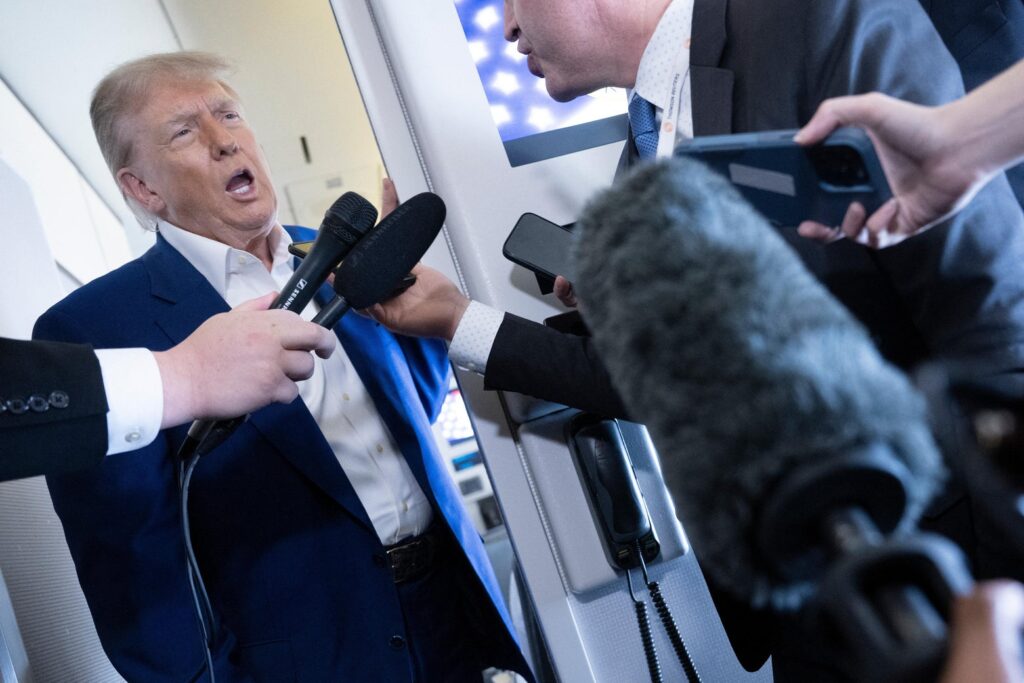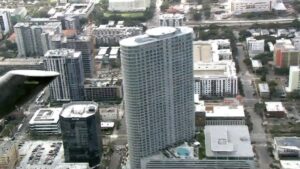
WASHINGTON D.C. – President Donald Trump announced a ceasefire between Israel and Iran, but questions about Iran’s nuclear capabilities loom large.
Breaking: Ceasefire Announcement Amidst Tensions
On Monday evening, President Trump took to social media to declare a “Complete and Total CEASEFIRE” between Israel and Iran, a statement that was promptly echoed by the State Department. Trump claimed, “Israel & Iran came to me, almost simultaneously, and said, ‘PEACE!’ The World, and the Middle East, are the real WINNERS!” However, the reality on the ground paints a more complex picture.
Immediate Impact of the Ceasefire
Despite the announcement, reports indicate that missile exchanges continued between the two nations. Oman, acting at Trump’s request, played a pivotal role in initiating talks, yet the ceasefire’s implementation remains uncertain. As Trump prepared to board Marine One, he expressed frustration over the ongoing hostilities, stating, “We have two countries that have been fighting so long and so hard that they don’t know what the [expletive] they’re doing.”
Key Details Emerge
Trump’s mixed messages regarding Iranian “regime change” further complicate the situation. On Sunday, he suggested regime change might be necessary, only to reverse his stance two days later, emphasizing stability over chaos. This inconsistency raises concerns about Iran’s potential acceleration of its nuclear program.
By the Numbers
Satellite surveillance showed 12 cargo trucks at Fordow’s entrance, potentially removing all 400 kilograms of enriched uranium.
Expert Analysis
According to intelligence assessments, the recent U.S. airstrike on Iran’s nuclear facilities, including the Fordow uranium-enrichment plant, may not have achieved its intended impact. Reports suggest that while some damage was inflicted, critical components of the site remained intact, setting back Iran’s nuclear program by only a few months.
Regional Implications
This development is significant as it highlights the ongoing regional power dynamics. Iran’s potential to rebuild its nuclear capabilities could prompt further actions from Israel. Prime Minister Benjamin Netanyahu’s goal of preventing Iran from acquiring nuclear weapons remains unchanged, suggesting that tensions in the region are far from resolved.
Background Context
The announcement comes as the U.S. grapples with the legacy of past military interventions. The fate of leaders like Libya’s Muammar Qaddafi and North Korea’s Kim Jong-un serves as cautionary tales for Iran’s leadership, influencing their strategic calculations.
Timeline of Events
- Monday: Trump announces ceasefire on social media.
- Tuesday: Reports of continued missile exchanges surface.
- Wednesday: Intelligence assessments question the effectiveness of U.S. airstrikes.
What Comes Next
As the situation unfolds, Trump’s administration faces challenges in maintaining diplomatic momentum. The president’s fluctuating statements and lack of a cohesive strategy contribute to the uncertainty. Experts warn that Iran’s nuclear ambitions, coupled with regional instability, could reignite hostilities.
Meanwhile, Trump’s aspirations for a Nobel Peace Prize seem increasingly distant. The complexity of Middle Eastern geopolitics underscores the difficulty of achieving lasting peace. With key players like the Islamic Revolutionary Guard Corps poised to influence Iran’s future direction, the path forward remains fraught with challenges.
The timing is particularly significant because any misstep could have far-reaching consequences for global security. As the world watches, the stakes are high, and the potential for escalation remains a pressing concern.






